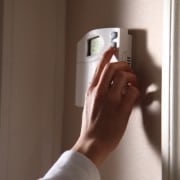Quality surge protection
There is little, if anything, you can buy today that does not have some electronic component. Even clothing as wearable electronics are starting to take hold. Not to mention a device (http://www.makeymakey.com) that allows you to make a keyboard from bananas. So, it’s time to take a look at making sure your electronics last as long as possible. I’m not talking about replacement plans or extended warranties. Today we’re talking about protecting your products from electrical surges.
The first order of business is to define a surge. Here’s one from Computer Hope (http://www.computerhope.com/jargon/s/surge.htm) on the ‘Net. “Alternatively known as a line surge, a surge is an unexpected increase in voltage in an electrical current that causes damage to electrical equipment. For example, the standard United States voltage is 120V. If an electrical current above this rating was to come through a power outlet for more than three nanoseconds, this would be considered a surge, anything less is considered a spike. A surge is usually created by lightning and can damage unprotected computers and sometimes even protected computers.”
Many people think a blink from your local power company is a surge, but these are generally caused by something like a tree contacting a line. In such cases, the system’s protective devices work, causing an interruption to protect the wires and other components. These are not surges, but more like turning a light on and off.
True surges will enter a home through any number of avenues. The most obvious is through the power lines. Less obvious is through the telephone lines, cable/satellite connections, water lines and any other metallic system that connects to your home. So, to protect against surges, you need to take a three-pronged approach.
Perhaps the most important thing to do is to be sure all the grounds in your home are good and that they are bonded together. Over the years, grounds can deteriorate, new services can be added with inadequate grounding and so forth. A faulty ground will allow surges into the home rather than bleeding them off into the earth. Get a qualified electrician to test and correct your grounding system.
Next, protect your electrical service entrance with a surge device. [If your co-op offers surge devices, include that information here] The easiest to install are those mounted behind the meter. They can also be mounted at the main electric panel. When a surge travels down the electric lines, these devices will act to “clamp” the surge and reduce its power. These are sacrificial devices that allow themselves to be destroyed rather than allowing the surge to pass through. Noble devices indeed!
The third prong is to protect expensive devices at their point of use. Computers and entertainment equipment are prime examples. Remember that surges can enter the home via avenues other than the power lines. Computers and entertainment equipment are frequently connected to cable and phone lines. Those devices need to have protection at the point of use that covers all possible avenues. These are generally in the form of a power strip or wall device most of us are familiar with. Use a quality product from a manufacturer such as Monster, Belkin, Tripp Lite, or APC, to name a few. Look for one with a joule rating of at least 1,000, a connected equipment warranty and compatibility with digital signals from cable and satellite. While you are at it, look for a “smart” strip that turns off all but one connected device when not in use.
Save money on your electric bill while protecting your equipment. It’s a definite win-win.
Tom Tate writes on cooperative issues for the National Rural Electric Cooperative Association, the Arlington, Va.-based service arm of the nation’s 900-plus consumer-owned, not-for-profit electric cooperatives.





